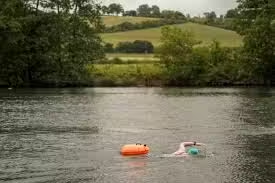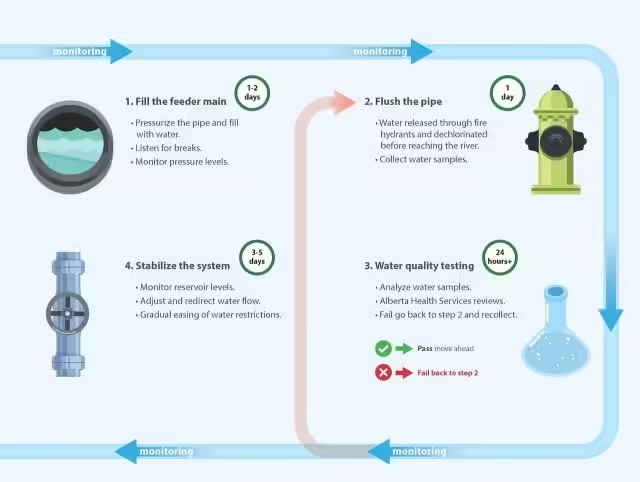The Startling Revelations of E. Coli Levels at Henley Days Before International

Days before professional rowers engage in the international race held at Henley, elevated amounts of harmful bacteria called E. Coli have been discovered there.
The Henley Mile, a section of a regatta course beyond the Oxfordshire town, was recently the subject of water quality monitoring. Results from 27 tests have shown mean levels of 1,213 E. Coli colony-forming cells (CFU) per 100 milliliters of water. Bathing water classifications state that water quality is poor and poses a health risk to the public when E. Coli levels exceed 900 CFU/100 ml.
More than 27 times the permissible limit for bathing water, or 25,000 CFU/100 ml, was the highest reading that River Action campaigners ever recorded. The value of 8,001 CFU/100 ml of water was the second highest.
As the outcome of the tests, organizers of the Henley Royal Regatta are asking the 4,000 professional rowers to safeguard themselves from water-borne illness and infection. It is advised that rowers cover cuts and not ingest splashes of water from the river.
The results serve as a reminder of the impact sewage pollution is having on UK rivers, according to Sir Steve Redgrave, an earlier Olympic rower & chairman of royal Henley Royal Regatta board of management, as countless rowers get ready to participate at Henley from July 2–7.
“The research conducted by River Action, that emphasizes the vital work that has to be done to enhance the health of our rivers for everyone to enjoy, is supported by the Henley Royal Regatta,” Redgrave stated. Every day, our rowers train across the nation. Our waterways are essential to the racing of our rivals as well as to every athlete in the country who trains every day.
Thames Water, however, denied that it was the reason for the bacterial rise and called River Action an alarmist group. The business claimed that after doing its own testing at two separate locations in the river since May, the findings were “reassuring.”
According to its laboratory testing, E. Coli levels were constantly at levels considered safe for swimming waters, with the exception of two days in May as well as two days in June.
According to the corporation, road runoff, industrial runoff, parasites from cattle, and birds were to blame for the two-day surges in intestinal enterococci and E. Coli that occurred in May and June.
Dave Wallace, who conducted the River Action tests in Henley, alleged that Thames Water had collected their measurements in a separate section of the river during a heated confrontation between the firm and activists.
Wallace conducted his testing under the direction of the non-profit organization Earthwatch using a Fluidion E. Coli analyzer, a portable microbiological laboratory validated by the World Health Organization. Instead of requiring the delays associated with static lab-based testing, the apparatus produces results in a matter of hours.
Wallace stated, “We went around monitoring the river in the part of the Henley Mile that sees the most recreational use. This is the regatta course.” “We discovered that Thames Water chose to test around the two locks, that are far near the regatta course, therefore low usage as well as lower sewage impact. We additionally understand that the discharge of the Henley wastewater treatment plant affects this area.”
River Action assessment on the Fawley Meadows Henley Mile started on May 28 and will last until July 7. 47% of tests between May 28 and June 25, 2021, were more than 900 CFU/100 ml.
“It is quite shocking that we have offered health advice to the participants at the Henley Royal Regatta,” stated James Wallace, the CEO of River Action. Thank heavens; by providing safety guidelines, the organizers are upholding their responsibility to provide protection to the rowers.
A person in the UK passes away Salad linked to E. Coli outbreak
The Health Security Agency of the United Kingdom has reported that there has been one death in England associated with the continuing E. coli outbreak.
According to the organization, the person had underlying medical issues and passed away in May.

Within 28 days of contracting the current strain, another individual in England with pre-existing medical issues passed away; however, data compiled by the UKHSA indicates that only “one of these fatalities may have been due to their STEC infection.”
It is believed that some supermarket sandwiches including salad greens are to blame for the E. coli outbreak. There is presently a decline in the number of patients being reported, suggesting that the epidemic may have concluded. All of the cases that have been reported thus far had symptoms prior to June 4th. As a precaution, a number of food manufacturers took some of their items off the shelves.
According to testing conducted by the Food Standards Agency, lettuce is the most likely source. Darren Whitby, the Food Safety Authority’s head of incidents, “Earlier this month, we verified that multiple sandwich producers had taken preventative measures to withdraw as well as remember different sandwiches, wraps, subs along with rolls after food chain alongside epidemiological links allowed us to narrow down an extensive variety of foods to the kind of lettuce found in sandwich items as the probable root of the epidemic.”
According to him, efforts are still being made to verify this so that preventative measures can be implemented. “This remains an intricate inquiry and we remain to collaborate with the appropriate companies as well as local government officials to make sure the that the appropriate measures have been taken to safeguard consumers,” he stated.
There were 275 E. Coli infection (STEC) O145 cases reported in the UK as of June 25.
182 instances in the United Kingdom, 58 in the Scottish Highlands, 31 in Wales, and 4 in Northern Ireland have been reported thus far. It is believed that the virus in the latter cases originated in England.
Since the outbreak began, at least 122 patients have been committed to hospitals for care. Although rates are falling, scientists warn that because some patient samples have not yet been examined, the total number of afflicted individuals could possibly increase.
Who is at risk and what is E. Coli?
E. Coli is a broad category of bacteria that are typically found in the intestines of humans and other animals. While some are safe, others have the potential to cause life-threatening illness.
This outbreak’s kind, Shiga-toxin-producing E. Coli (STEC) O145, has the ability to damage the lining of the stomach. The following symptoms may appear a few days later: cramping in the stomach, sometimes with blood in it.
- Diarrhea
- Fever
- Vomiting
In simple situations, symptoms may persist for up to two weeks. The majority of people heal quickly, but some—like small children or those with underlying medical issues—may get quite sick.
For E. Coli infections, there is no particular treatment available. Most infected individuals can recover without medical intervention and are often cared for at home. When in doubt, people should get medical attention.

To lower the chance of infection:
- Wash your hands frequently with warm water as well as soap; not all bacteria that cause diarrheal disease may be killed by alcohol gels.
- Clean fruits and vegetables, then prepare food according to recommended temperatures.
- If you are experiencing symptoms, avoid cooking for other people or going to hospitals or assisted living facilities.
- Resuming work, school, or the nursery should wait 48 hours after the symptoms have subsided.
People also Reading:
Faiza Shaheen officially starts her second bid to topple Iain Duncan Smith.
Tom Holland’s Romeo impresses crowds more than critics.
Google Releases a Special Doodle in Honour of the Accordion’s Patent Anniversary




